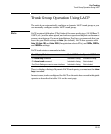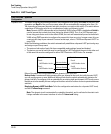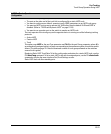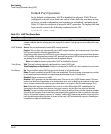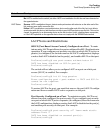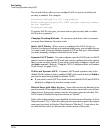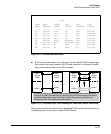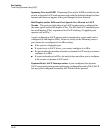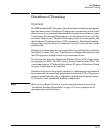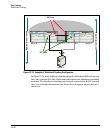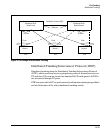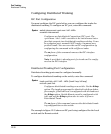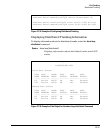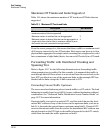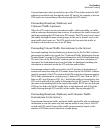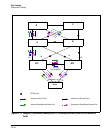
Port Trunking
Distributed Trunking
Distributed Trunking
Overview
The IEEE standard 802.3ad requires that all the links in a trunk group originate
from the same switch. Distributed Trunking uses a proprietary protocol that
allows two or more port trunk links distributed across two switches to create
a trunk group. The grouped links appear to the downstream device as if they
are from a single device. This allows third party devices to interoperate with
the Distributed Trunking switches (DTSs) seamlessly. Distributed trunking
also provides node-level Layer 2 resiliency in a Layer 2 network if one of the
switches fails.
Distributed trunking switches are connected by a special interface called the
InterSwitch-Connect (ISC) port. This interface exchanges information so that
the DTSs appear as a single switch to a downstream device.
The downstream device is a Distributed Trunking Device (DTD). Only servers
are supported as DTDs. The DTD (server) forms a trunk with the DTSs. The
connecting links are DT links and the ports are DT ports. A Distributed Trunk
can span a maximum of two switches.
Distributed trunks can be grouped together by configuring two individual dt-
lacp trunks with the same trunk group name in each switch. The DT ports are
grouped dynamically after the configuration of distributed trunking. Figure
12-13 shows a basic distributed trunking configuration.
Note Before you configure the switch, it is recommended that you review the
“Distributed Trunking Restrictions” on page 12-35 for a complete list of
operating notes and restrictions.
12-27



